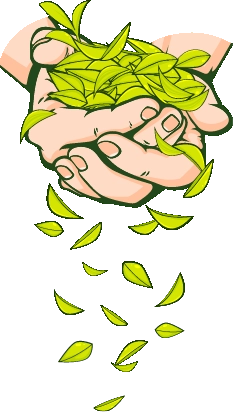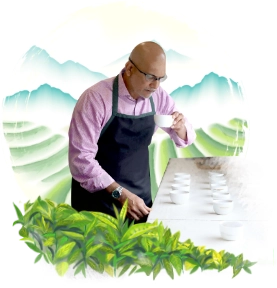Wisdom of Sages : Holistic Health and Well-being – Spice (Part 4)
In this concluding blog, we take a look at 5 more Indian spices that have been mentioned in Ayurveda for their taste, healing and curing benefits.
In case you have missed reading our earlier blogs on Indian plants and herbs mentioned in Ayurveda, here is a quick link to Part 1, Part 2 and Part 3 of the blog series – Wisdom of Sages.
Cloves (Syzygium aromatic)
Commonly known as Lavang in India, clove has been used in India as part of the Ayurvedic healing system. It has a spicy, warm and pungent taste with a sharp but pleasant flavour. In spite of being a warm spice, clove has a cooling effect on the body. It is used as a cooking spice for its taste and flavour, but is also used to heal a number of ailments ranging from coughs and sore throats to regulating blood sugar to fighting toxicity.
Clove is the dried flower bud of the clove tree. The key bioactive compound in clove is Euogenol. Chewing and sucking on one or two buds of cloves provides instant relief for sore throats. Clove is a key ingredient in Masala Chai as well as most herbal spice infusions.
Benefits :
- Powerful antioxidant
- Rich natural source of Manganese – essential for brain functioning
- Relieves cough and cures sore throat
- Relieves toothache
- Strong anti-bacterial and anti-fungal properties
- Regulates blood sugar
Cumin (Cuminum cyminum)
Cumin is used in kitchens all across India as one of the key spice in everyday cooking. It is commonly known as Jeeera or Jira. Cumin seeds are generally roasted to release their earth, warm flavour. They impart of sweet, bitter taste to the food.
The key active ingredient in cumin is the Cuminaldehyde. Key medicinal benefits of cumin are centred around digestion and immunity.
Benefits :
- Loss of appetite
- Nausea or vomiting
- Indigestion
- Strong anti-inflammatory properties
- Can help reduce weight
- Helps blood circulation
Carom Seeds (Trachyspermum ammi)
In India, carom seeds are commonly referred to as ajwain. They are seeds of the herb off the carom or ajwain herb. They do resemble cumin seeds, but can be distinguished due to their slightly greenish colour. Carom seeds have a sweet, pungent-bitter taste and a very flavour that is similar to star anise and oregano. In fact, carom seeds smell very similar to thyme as one of the main bioactive compounds is the volatile oil thymol.
Carom seeds have many medicinal and healing properties. In Ayurveda, carom seeds are used to cure digestive ailments as well as some respiratory disorders.
Benefits :
- Rich in fibre, vitamins, antioxidants and minerals
- Aids digestion and cure stomach disorder
- Can help in fighting bacterial and fungal infection
- May help improve cholesterol levels
- May aid regulate blood pressure
Fennel Seeds (Foeniculum vulgare)
Known as Saunf, fennel seeds are widely used in Indian cuisine and medicinal system. It has a sweet, nutty taste and a subtle star anise like flavor. In Ayurveda, fennel seeds have a special place for their immense benefits in improving digestion.
Both the fennel plant and fennel seeds are a rich source key nutrient like fiber, vitamin C, calcium, iron, magnesium, potassium and manganese. With a low calorific value, fennel seeds have many health benefits.
Benefits :
- Has a cooling effect on the body
- Helps digestion
- Power antioxidant
- Can help in cardiovascular diseases and disorders
- Known to reduce inflammation
Saffron (Crocus sativus)
Known as Kesar in India, saffron has used for thousands for years in cooking, medicine and rituals in India. It is the most expensive spice in the world today. What makes saffron so expensive is the fact that it is made from the stigma of the saffron flowers that bloom only in autumn. The stigma of the flowers are hand-plucked and hand-dried, an intensely laborious process, which is what makes saffron so expensive.
The main active compounds in saffron are crocin – which gives it the deep yellow-golden colour, and safranal – which give it its unique earth-flowery flavour.
Saffron has many health benefits.
Benefits :
- Improves skin complexion and tone
- Cleanses and heals external wounds
- Powerful antioxidant and anti-inflammatory properties
- Known usage as sedative
- Can help in fighting depression
- Helps reduce appetite and aid weight management
- Can also help in fighting mental degenerative diseases like Alzheimer’s
This concludes our blog series, Wisdom of Sages. This four-part series has briefly touched upon ten plants and herbs as well as to spices that are a showcase of how the sages of ancient India unraveled the secrets of the natural plants, and used them in the world’s first holistic system of medicine known as Ayurveda.
Today, as the world faces unprecedented challenges unleased by the spread of the deadly Corona 19 pandemic, holistic health and wellness has once again proven to be the best shield. The world is once again turning to India’s time-tested and timeless Native Indian Wellness to overcome this challenge.
(Disclaimer : The Indian medicine system is based on the age-old Ayurveda. Research is going around the world to study these plants in more depth and scientifically prove their benefits. This blog only presents the current information as a general guide for the readers, who are advised to check with their physicians or qualified natural health practitioners before incorporating any of the above in their routine, especially if they are under medication.)

Tea is a religion in the art of life.

